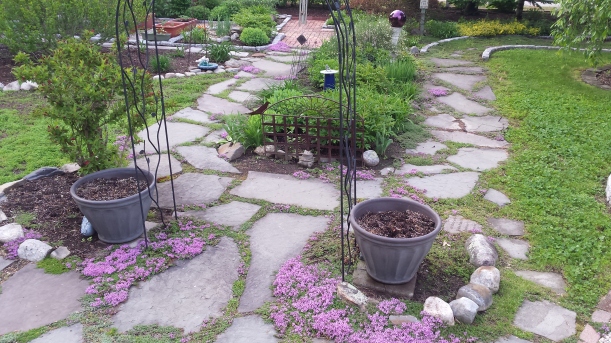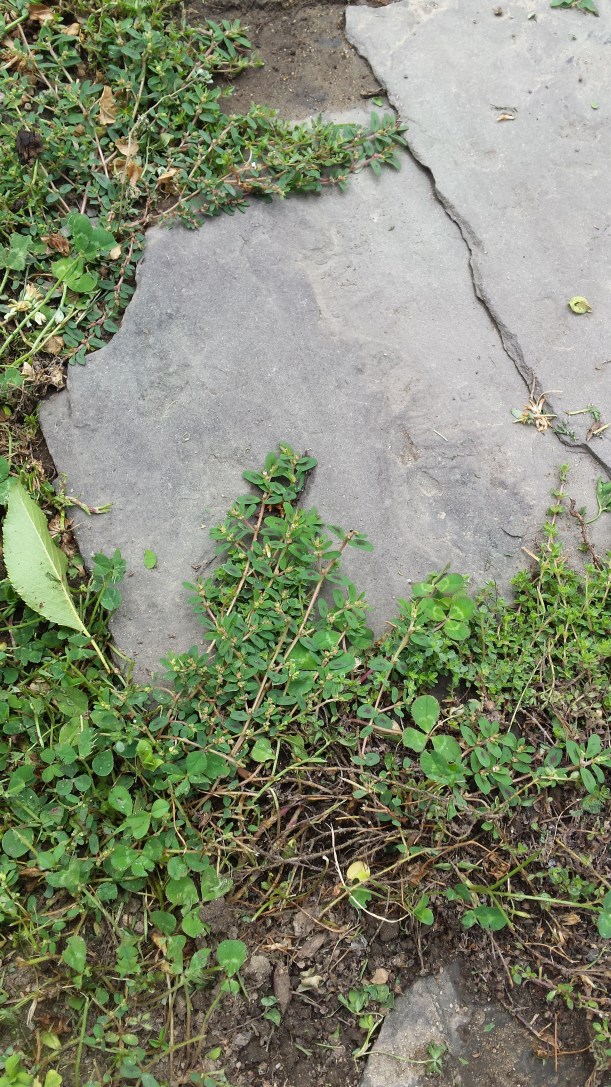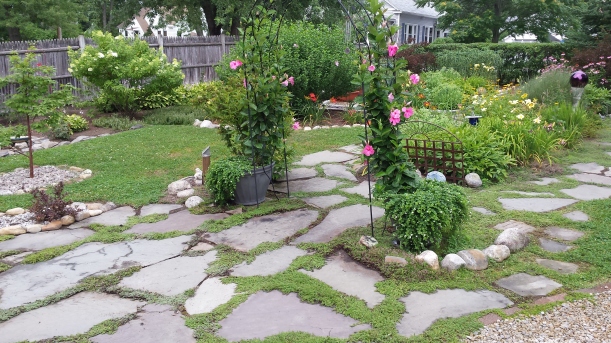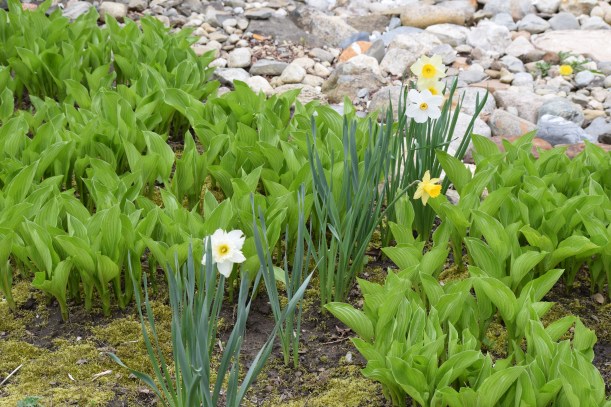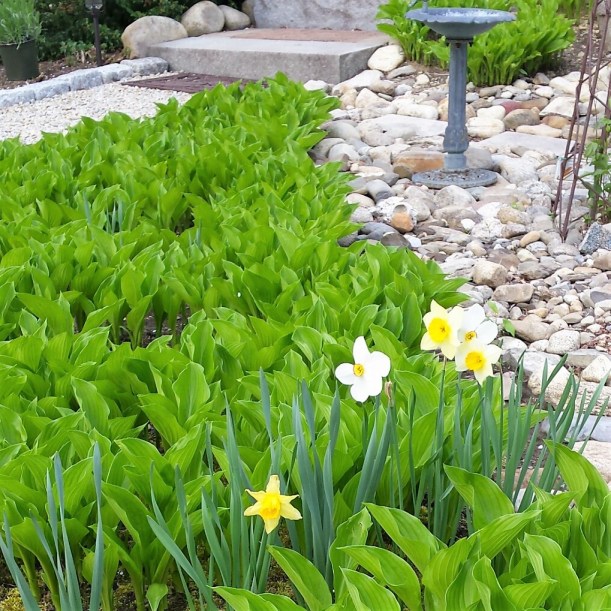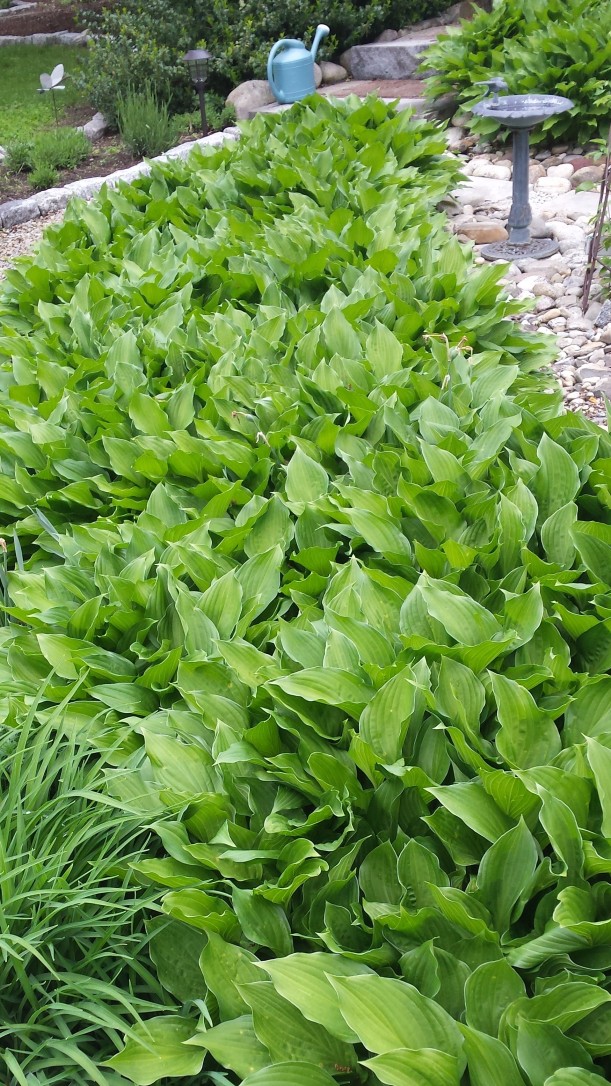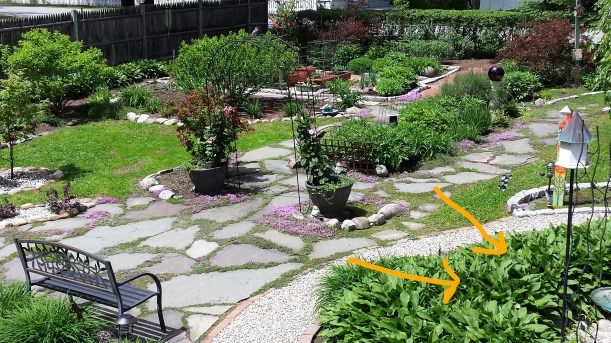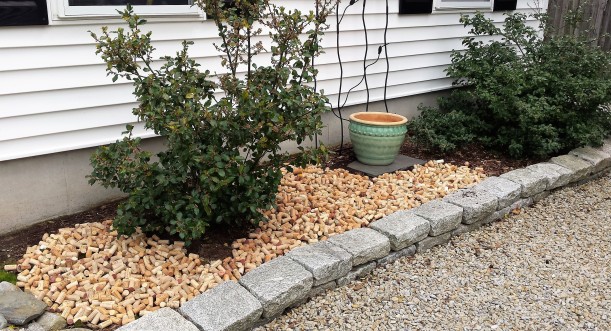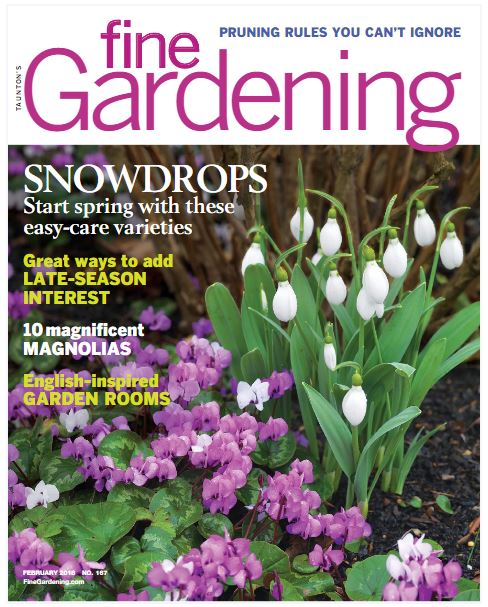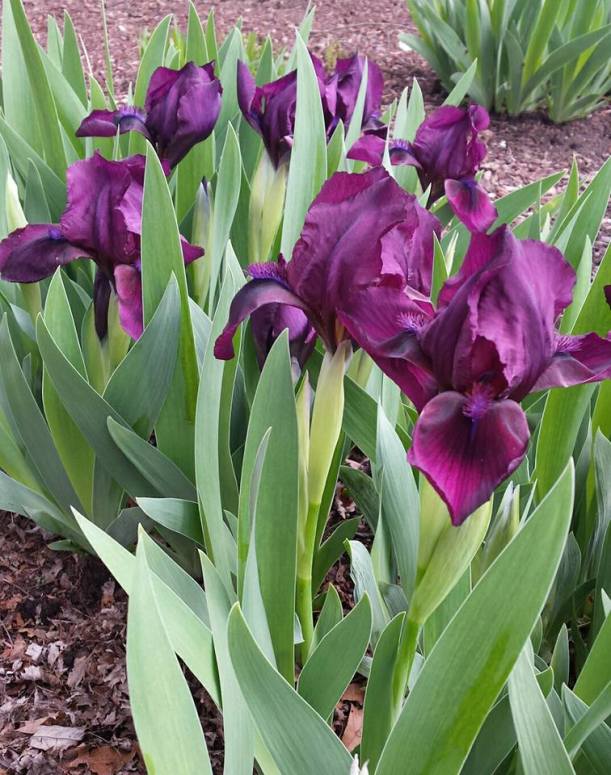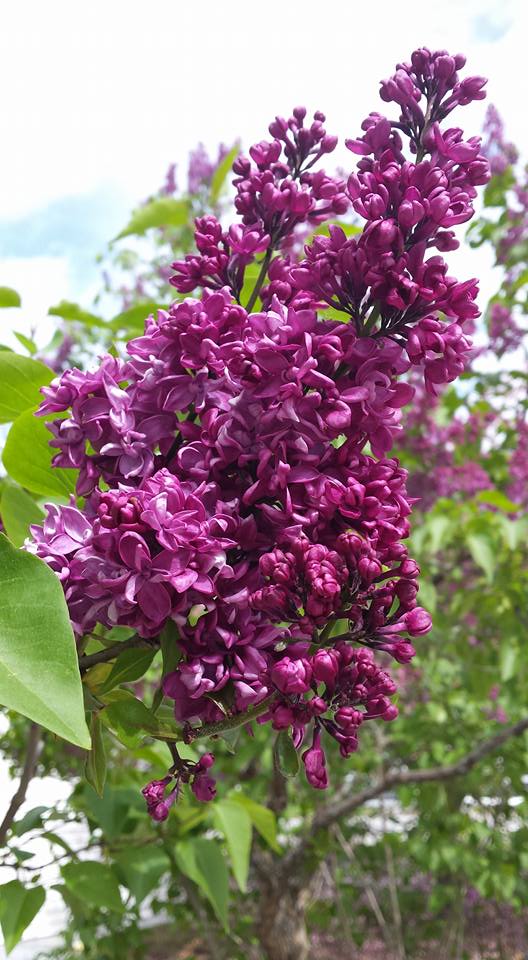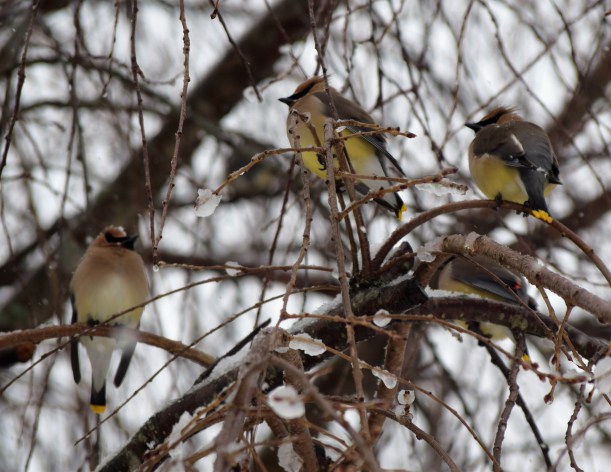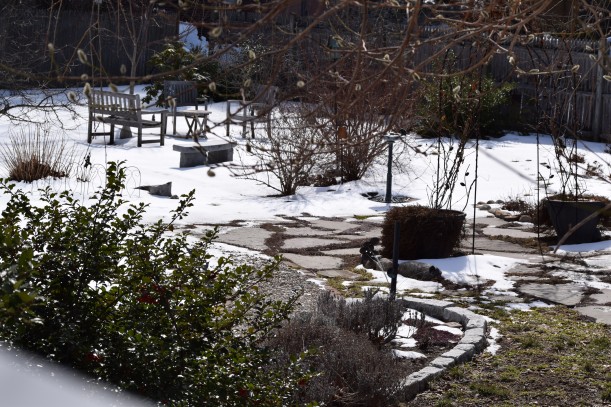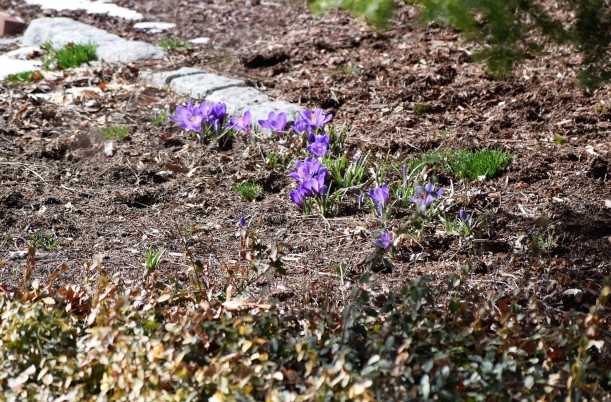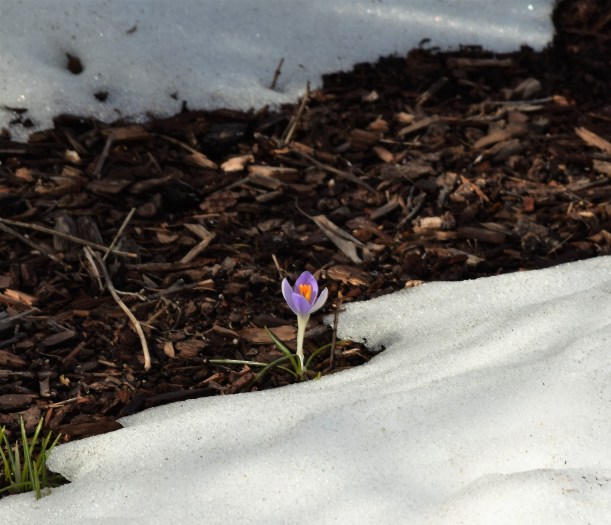Good-Bye 2017 Gardening Season!
It’s been three weeks since our first hard freeze in southern New Hampshire. Work in the garden has been winding down. It’s time to rake leaves to create more mulch/compost, clean and store delicate statuary and birdbaths, bring in hoses, etc. Planting spring bulbs should be fun, but after a long season, even that project feels like just another chore. (I’ll think differently about that when I have 50 new tulips blooming come spring, though!)
I’ll be honest. I think every gardener needs a winter break – especially following a successful gardening season.
Overall, 2017 was an excellent season. The zinnias were spectacular! We had a decent harvest of fresh herbs and greens, tomatoes, and peppers. The wine cork mulch project far exceeded expectations! And the hummingbirds arrived and departed exactly as expected – delighting us every single day during their nearly 6 month visit.
The were only two disappointments. 1) The lack of peony flowers in June and 2) the ever constant ‘sad, sod situation’ of the lawn. (Planting white clover seemed like a genius idea this spring. I was even bragging about how great the yard looked in May and June. Then ‘Beatrix Potter’ arrived! Our new resident wild cottontail bunny enjoyed the clover in July — eating all the lush green back to the roots. Oh well, I guess everyone needs to eat and that was the only havoc wreaked our new garden visitor.)
And here it is, late November and I’m just sharing some of the 2017 stories now. My original intent with my ‘Garden with Grace’ blog was to document each growing season – in detail. That said, while I’ve had the best of intentions, as well as at least a dozen gardening stories (constantly!) in my head, I’m not as consistent with sitting down to write during the summer months.
Hello Instagram!
Thankfully, I can look back to my photos – especially those on Instagram – to remember annual gardening highlights. I invite you to FOLLOW ME via: https://www.instagram.com/gardenwithgrace/
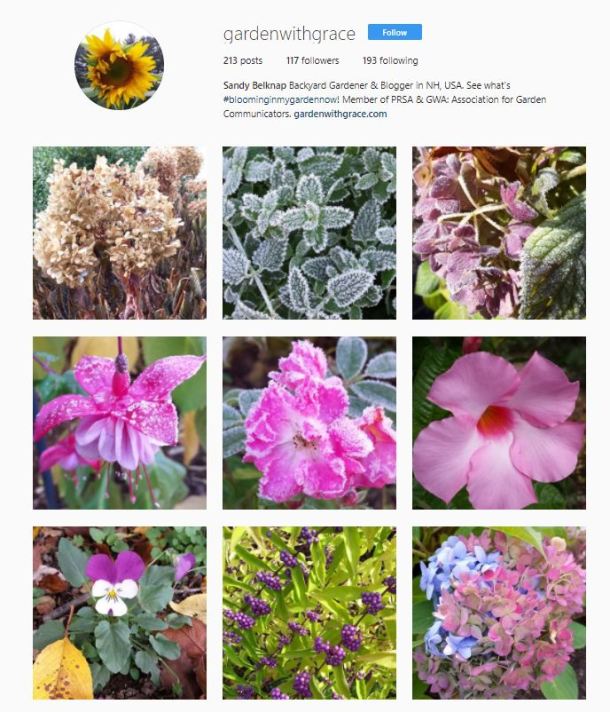
I’ve been using #BloominginMyGardenNow for a few years now and never realized that it’s pretty much MY hashtag until a friend in the media called it out for me. (By the way, as a marketing and communications professional, I think that’s pretty cool, and admit that I’d tried to create a hashtag to be my own, it would’ve been a lot more difficult!)
It’s amazing how a basic mobile phone camera can create such detailed photos of flowers and in some cases, insects. I don’t use any filters on my Instagram photos, so what you see, is what I see. On the days I’m searching for inspiration, I scroll through my Instagram feed to either write, plan for next year’s garden, or just remember past moments in the garden.
So my documentation of each gardening season is, indeed, getting done. Not in the way initially intended or planned, but it works nonetheless….very much like the actual act of gardening, itself.
“Despite the gardener’s best intentions, Nature will improvise.” ~M.P. Garafalo

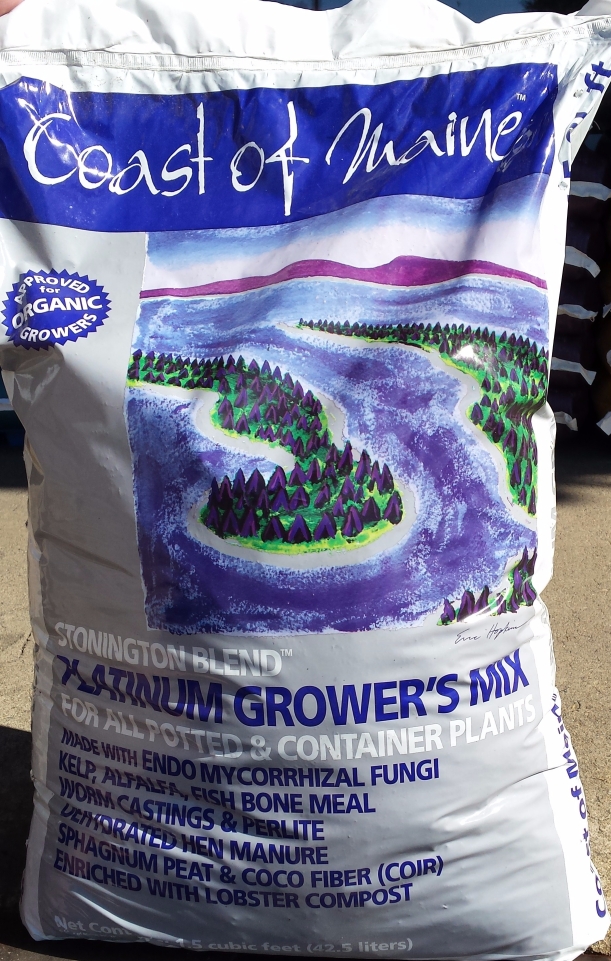
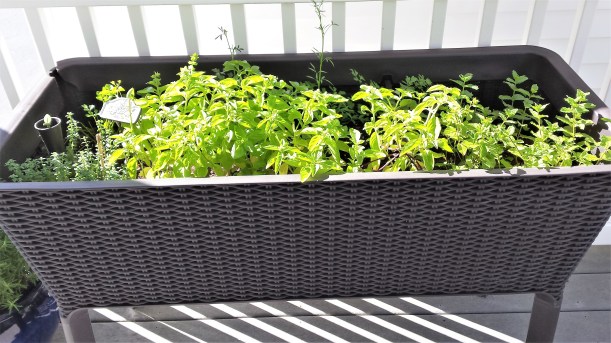

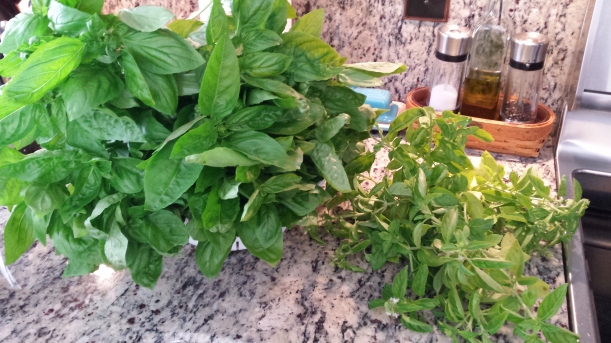
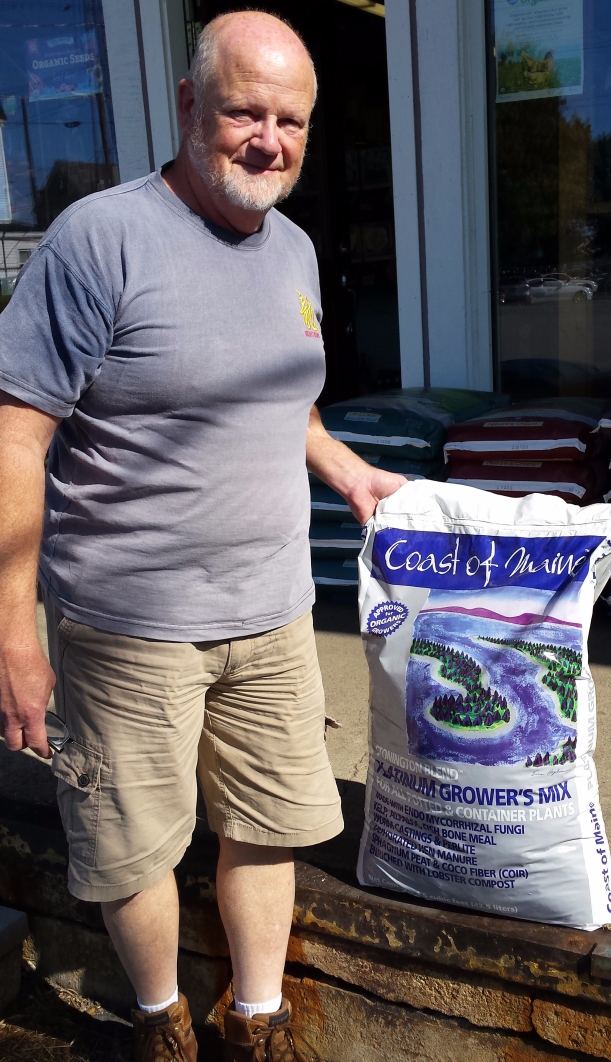
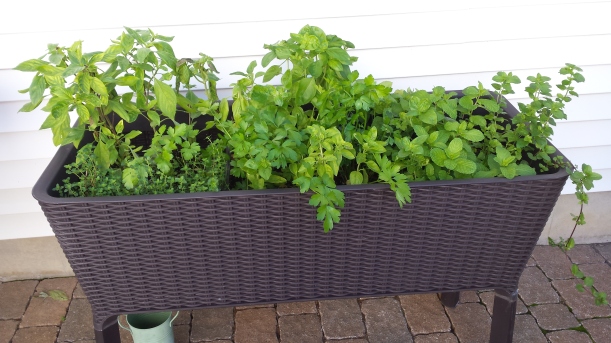 In the past, this was a week when remaining herbs would be removed and containers cleaned and put away until spring. However, with absolutely no frost or freezes expected in southern New Hampshire for at least two more weeks, these are staying put so I can enjoy the parsley and mint through October. Halloween Mojitos, anyone?
In the past, this was a week when remaining herbs would be removed and containers cleaned and put away until spring. However, with absolutely no frost or freezes expected in southern New Hampshire for at least two more weeks, these are staying put so I can enjoy the parsley and mint through October. Halloween Mojitos, anyone?













